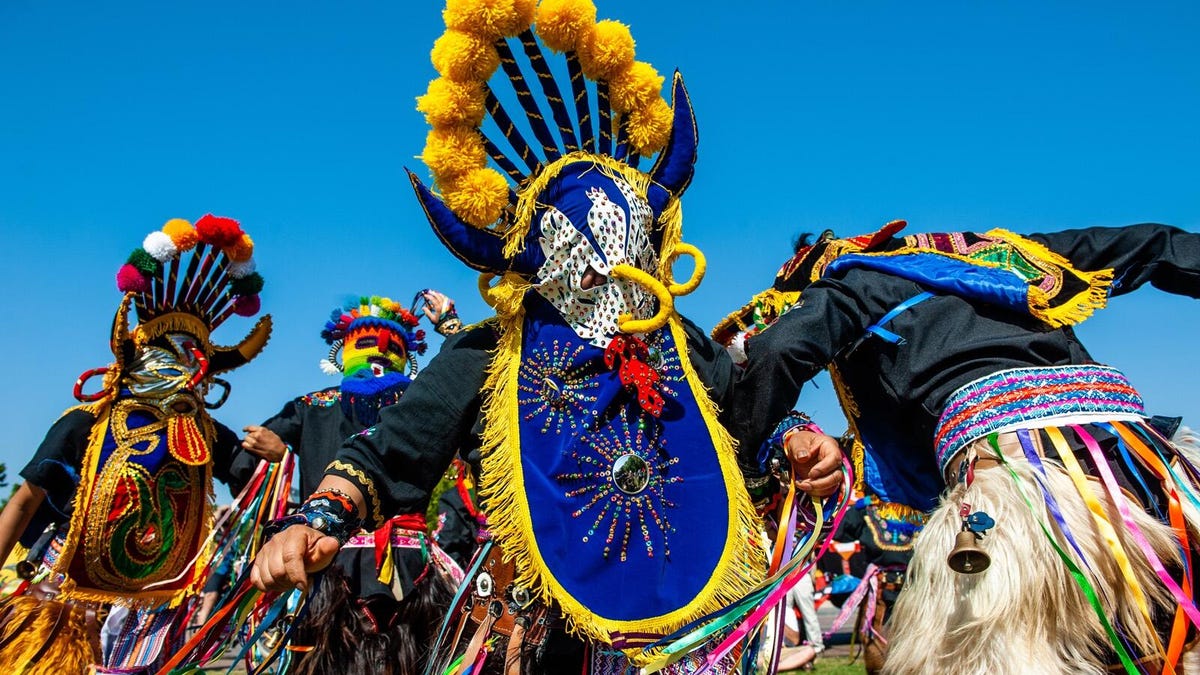 Why You Can Trust CNET
Why You Can Trust CNET Indigenous Peoples' Day: Learn an indigenous or endangered language with this app
Transparent Language Online partners with 7000 Languages to offer 17 indigenous and endangered language courses created by and for indigenous communities.

People around the world gathered in August to demonstrate their support of indigenous peoples' rights. Pictured here are traditionally dressed Bolivian dancers.
On Indigenous Peoples' Day, 14 states across the US recognize and celebrate the Native American populations who were already living on North American soil before Italian explorer Christopher Columbus arrived. Despite the growing awareness of these cultures, indigenous languages face the danger of extinction. In 2018, over 3,000 languages were at risk of being lost forever. Last year, Tijjani Muhammad‑Bande, the president of the United Nations General Assembly, said that two indigenous languages are at risk of disappearing each month.
To help protect these endangered languages, apps have been stepping up over the years. Duolingo, for example, offers lessons in ʻōlelo Hawaiʻi (Hawaiian) and Diné (Navajo), and Drops offers Ainu, an indigenous Japanese language.
Read more: Best language learning apps of 2020
Another option for learning and helping preserve an endangered language is Transparent Language Online. The language learning software company partnered with the nonprofit 7000 Languages, which helps advocates from endangered language groups to preserve their language in online courses. The result is online lessons created by the tribes and for the tribes. But with the tribal advocates' permission, anyone can purchase them on the site or app and try them out too.
"The loss of an indigenous language is an unfathomable loss for its community, but it's also a loss of richness in our shared cultural fabric," Michael Quinlan, Transparent Language CEO told CNET. "Now we have a chance to preserve and promote those languages, and protect the cultural identity and well-being of those communities for generations to come."
Transparent Language offers 17 courses, some in different dialects or packaged for kid-friendly learning. After you sign up, you can choose a language to learn and confirm to get started. Your language options are:
- Balinese
- Behdini Kurdish
- Ojibwe, Central Ojibwe, Northwestern Ojibwe and Oji-Cree
- Dakota and Sisseton Dakota
- Denesuline
- Kituba
- Koasati
- Koyukon
- Holikachuk
- Gwich'in
- Denaakk'e
- Benhti Kenaga'
If you're specifically interested in learning an endangered or indigenous language, you can access them for free through 7000.org, or if your library has a license to the software, you can search your ZIP code and make an account for free.
To test the service, I explored a few lessons in Dakota, the language spoken by the Dakota people of the Sioux tribe. The course was created by the Sisseton-Wahpeton Oyate Dakotah Language Institute.
Transparent Language adapts its lessons to different speakers who might be approaching the lessons.
The lesson started on adjectives with 11 vocabulary words. I listened to the word spoken in Dakota and then saw the word in English on the screen. If you clicked the turtle icon in the bottom left corner of the screen, the pronunciation would be slower. The next lesson, Recognize and Say It, played the Dakota word and gave me a moment to remember the translation. Then, on the honor system, I had to click yes or no, on whether I guessed right.
From there the lesson goes over the words in different ways like pronunciation, multiple choice, matching and writing them.
Before you get started on your lesson, Orsolya Gall, Transparent Language's director of content development, suggests a bit of research on the communities -- many of whom wrote the courses from scratch.
"The story and lifestyle of the community are built into the phrases they will be learning in these courses," Gall told CNET.
This is an example of a lesson in Hän, a language spoken by the Hän Hwëch'in people living in Eagle, Alaska and Dawson City in Yukon Province, Canada, according to 7000 Languages.
I tried the lessons out on my desktop, but Transparent Language also has mobile apps for learning on the go. You can download the app for iOS, Android or Amazon. The service also offers accounts for government workers, businesses and educational institutions. Again, Transparent Language might also available at your local library. To find out, you can search your ZIP code on the website and if your library has license to the software, you can make an account and use it for free.
You can try Transparent Language's courses free for 14 days through their website. After that, it costs $25 a month, or $150 for a year. Again, If you're specifically interested in learning an endangered or indigenous language, you can access them for free through 7000.org.
For more on language learning, check out the best language learning apps of 2020.

